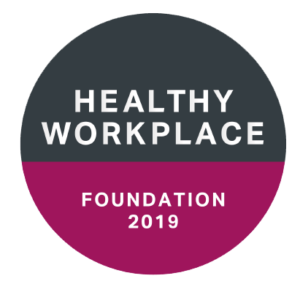London Sport’s Active LDN conference took place on 17 October at Decathlon’s flagship Surrey Quays Store to discuss “Active Solutions to London Challenges”. A few weeks on from the event, our Insight Manager Josef Baines reflects on one of the event sessions: “Building collaboration and sustainability into place-based approaches”.
Sport England considers place-based approaches an important aspect of creating local level conditions which help incentivise people to take up physical activity. In short, place-based collaboration is an approach that aims to bring together various organisations and stakeholders in a local area to deliver person-centred solutions to tackle local community challenges. This involves identifying, recognising, and valuing each other’s skills, lived and professional experiences, capabilities, and resources to help reduce inequalities in access to local services.
During London Sport’s Active LDN conference, I attended the morning session coordinated by London Sport’s Nicky Affleck, Strategic Lead for Place, to explore the topic with experts from StreetGames, Laureus Sport for Good, Activity Alliance, Muslimah Sports Foundation and Hackney Council. In this blog, I have highlighted key areas raised during the panel discussion for our future consideration when planning community-level projects.
Challenges
Place-based collaboration is not an approach that we should take lightly. Stakeholder dynamics during the collaboration process are often complex and time is required to build relationships with people and organisations who bring different vision and expectations of how a community should be supported.
There are also resource constraints and power imbalances which occur during a place-based collaboration, which could also affect the quality and sustainability of engagement, something that community facilitators will need to carefully consider to achieve community level results.
Opportunities
Although place-based collaboration is complex, it brings a wealth of opportunities for the local community. For example, stakeholders and organisations collectively solve problems using innovation, creativity, and experience to deliver holistic approaches and unlock new resources that help address community needs.
Furthermore, the relationships established during the place-based collaboration process enables community cohesion, empowerment, and a greater sense of belonging due to untapping local knowledge and context that can help contribute towards local policy and system change.
Key principles of place-based collaboration
To maximise sport-related place-based collaboration, Active LDN’s expert panel have suggested the following approaches for us to take on board:
Ensure that place-based project delivery time is flexible and appropriate to allow relationships to effectively develop. Longer delivery time allows projects to be properly embedded in the place-based system, due to the time required to cultivate and initiate deep-rooted change in the community.
Work from bottom up. Understand the place and people via needs analysis, and learn and share knowledge with organisations and stakeholders involved in the project.
Proactively engage with the community and encourage them to own the project.
Establish a shared vision, goals, and values. Agree a community-defined success, but also plan for sustainability post-delivery.
Be honest and set expectations at the outset of the project. Proactively communicate and maintain relationship to help manage local community morale and expectations.
Work with traditional and non-traditional partners, and with local community members to help diversify viewpoints and access untapped resources.
Upskill local community members to become leaders and support them with capacity building. Also, more importantly, train up young community leaders of tomorrow to help sustain the project.
Include a mixture of quantitative and qualitative measures to track project progress. Project-specific milestones need to be visible and meaningful to community members, and achievements need to be regularly communicated to maintain community buy-in.
To help bring to life an example of a sport-specific place-based collaboration, do check out the Get Out Get Active programme. In their report, they have outlined in detail the approaches used to effectively embed the programme in a place-based system.
Useful sources for further reading
There are several articles and reports on how to effectively deliver place-based collaboration, but I have selected the following reputable sources that may be worthwhile for you to read to support your future projects:
Place-based partnership working
https://www.local.gov.uk/place-based-partnership-working
Historical review of place-based approaches
A scoping review of place-based approaches to community engagement and support
Place-based partnership toolkit
https://www.strivetogether.org/wp-content/uploads/2021/12/Place-Based-Partnership-Toolkit.pdf
Model City London: Lessons and evidence of what works
https://www.ndti.org.uk/assets/files/MCL-Final-Evaluation-Report.pdf





